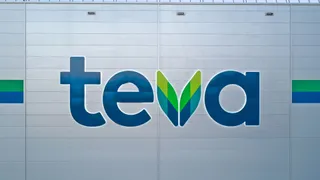
The right formula: Minimising the cost of chemical and pharma patents
From setting a clear overall strategy to drafting high-quality claims, Christopher Wheeler and Gerald Murphy of Birch, Stewart, Kolasch & Birch explain how to reduce patent prosecution expenditure and obtain better IP protection.
Patent prosecution is a significant driver of IP costs in the US and abroad. With rising fees and other industry cost pressures, it is important to streamline your prosecution processes.
This article focuses on key strategies in the chemical and pharmaceutical arts that reduce prosecution costs and result in better patents.
1. Develop an overall patent and prosecution strategy
It is important to develop an overall strategy that will inform your decision making throughout the prosecution process.
You should have a clear understanding of where the application fits in your overall portfolio, valuation, cost sensitivities, and the risk-reward profile.
You should also consider the goal of securing the patent, which may include commercialising a new product/ process, simply getting a patent, getting a provisional filed for funding pitches, or adding to an existing portfolio to block competitors.
Clearly articulating an overall strategy is particularly important in the chemical and pharmaceutical arts given the complexity of the issues, crowded technical space, and high potential for drawn-out prosecution.
It is also important to recognise that prosecution strategy may change during the pendency of the application due to shifting business priorities or other factors. Recognising this potential and being able to adapt in response to changing priorities is also key to reducing overall prosecution costs.
2. Draft a broad and high-quality patent application
You should spend the extra time and effort up front to ensure that you have a broad and high-quality patent application. This will save on downstream costs and ensure a strong and enforceable patent.
- Draft claims for all categories of the invention
Drafting claims for all categories of the invention increases the likelihood of receiving a robust initial prior art search. If additional searching during prosecution is required, it can lead to piecemeal prosecution and increased costs. Including all claim categories is also important in making your application portable to foreign countries where categories may be treated differently.
Draft high-quality claims The claims define the scope of the patent rights. It is important to ensure that the claims cover the scope of the invention and that the claims are drafted in line with the overall prosecution strategy.
To reduce claim fees, a more complete disclosure of various aspects of the invention in “claim form” could be provided in the specification. These “aspects” can be quickly converted to claims during prosecution.
Alternatively, a more robust claim set could be submitted up front. This may result in excess claim fees, but it could also result in quicker identification of allowable subject matter, and therefore allowance. Good claims also avoid potential §112 issues.
For applications that were first filed in a foreign country, consider filing a preliminary amendment to conform the claims to US practice and avoid such issues.
- Describe important details of invention features in specification
For composition claims, you should define ingredients functionally; provide generic and sub-generic terms (eg “solvent”, “polar solvent”, and “polar organic solvent”); disclose effective amounts and amount bases; describe relevant physical properties, and list specific preferred ingredients.
Ranges with many endpoints for disclosed conditions, components, parameters, etc, should also be included.
For process of preparation claims, you should provide functional and numerical descriptions of various important features such as actions, time, temperature, pressure, etc.
For method of use claims, you should describe the “target” of the method and features of the intended use(s). For industrial products or chemicals, you should describe how they are employed.
For pharmaceutical uses, you should define target patient attributes. For herbicide/ plant growth claims, you should define the target plants or weeds and relevant effective dosages.
These details will provide options for potential claim amendments during prosecution and could help rebut examiner rejections.
They can also help distinguish from prior art and overcome “scope rejections” for lack of written description support and/or enablement.
- Provide comparative data in the specification
You should provide comparative data in the specification. The data should compare with the closest prior art (if available) and show criticality of features and parameters of the invention, eg, amounts, properties, etc.
The data should show the presence of important features (eg ingredients) versus the absence of the same features. Such data will be treated as evidence and allow you to establish unexpected results, which can be useful in rebutting an obviousness (or inventive step) rejection.
Examiners review the data in the specification before issuing a first office action and should make an initial determination of the sufficiency of such evidence.
Such evidence can also be submitted later in prosecution after filing but often at higher cost and complexity.
3. Have an IDS policy that is not overly burdensome
It is essential to timely file information disclosure statements (IDSs) to avoid US Patent and Trademark Office (USPTO) fees and to avoid costs associated with filing requests for continued examinations (RCEs).
Prior art cited in the background should normally be filed. Category X references from foreign search reports and prior art submitted by third parties should be filed.
Because there is no per se rule that all prior art from foreign applications must be filed, you should consider whether all prior art, search reports, and patent office communications need to be filed, especially references that are Category A references and/or general state of the art.
A first IDS should be filed at the time of filing or within three months after filing. For subsequent IDSs, consider filing just after the case has been assigned to an examiner but before a first action issues.
Once the application is under examination, you should quickly file additional prior art to avoid significant USPTO fees and limitations on filings.
4. Unity of invention (restriction requirement) and election of species
Unless there is no reasonable basis for traversal, make a short traverse of requirements for restrictions. Simple traversals should usually suffice.
Longer traversals will often not significantly increase the chances of withdrawal.
Traversing an election of species requirement may result in risky admissions on the record, eg, that various aspects (species) of the invention are not patentably distinct from each other.
Making claim amendments or adding claims to an elected group when filing a response may facilitate a more productive first action from the examiner. Cancellation of claims that will not be examined could avoid the expense involved in handling examiner’s amendments or ex parte quayle actions.
5. Responding to a first office action
Most patent applications will receive a first office action on the merits.
- Make your response to the first office action count
The response to the first office action should be considered in view of your overall strategy.
If the goal is quick allowance, claim amendments should be considered, not only to the independent claim(s) to distinguish over prior art, but in the form of new dependent claims as potential “back-up” positions that contain features that further distinguish from the cited art.
Any amendments made in response to a first office action are entered as a matter of right.
New dependent claims may include narrower claims that identify allowable subject matter sooner. If a final office action is issued, it is unlikely that any substantive claim amendments will be entered without a request for continued examination (RCE).
If the goal is to secure broad claim scope, strategic arguments and/or
supplemental evidence should be considered in responding to the first office action. But this may extend prosecution and increase overall costs.
- Conduct an examiner interview
You should conduct an examiner interview before filing a response to a first office action that contains any substantive issue. Conducting the interview will incur extra attorney fees, but the downstream benefits are significant.
The attorney can get a better understanding as to the examiner’s concerns and determine what approach will work best.
6. Post-first office action strategy
Many patent applications will receive a second office action on the merits, which is usually a final rejection.
Once an application is after the final rejection stage, patent prosecution costs begin to add up. For this reason, it is important to check in with your overall strategy to help inform the best next steps.
One option in responding to a final rejection is to submit additional arguments and/or evidence (and conduct another interview), particularly if claim scope is important to you.
This approach could expedite allowance and avoid an RCE or an appeal.
Another option would be to respond to the final rejection with additional amendments.
Such amendments may require an RCE. But if the amendments are likely to lead to allowance, eg, by significantly narrowing the claims around the prior art, or by recommendation of the examiner during an interview, the RCE may be worth the cost to receive a notice of allowance in the next action.
Yet another option would be to appeal the rejection(s). Appeals are costly and time-consuming.
However, the issues in the chemical and pharmaceutical arts can be complex and subjective.
Therefore, appeals could offer an expedited (and sometimes only) path to allowance if an application is “stuck” before a difficult examiner.
The above actions will undoubtedly result in saving incremental costs during prosecution and should result in earlier allowance and better patents.
Takeaways
- High potential for drawn-out prosecution in chemical/pharma
- Invest in quality patent applications to save costs later
- Carefully consider response to first office action
Chris Wheeler is an associate at BSKB. He can be contacted at: christopher.wheeler@bskb.com
Gerald “Jerry” Murphy is senior counsel at BSKB. He can be contacted at: gmm@bskb.com

